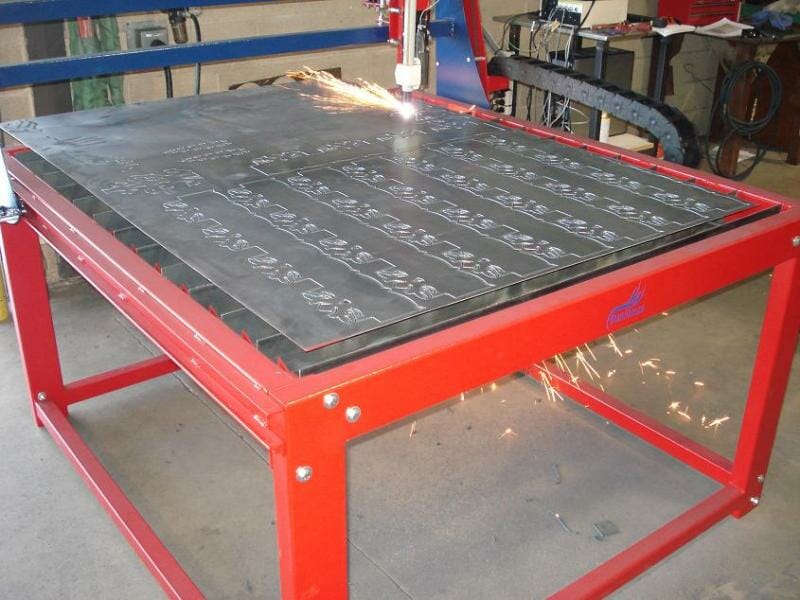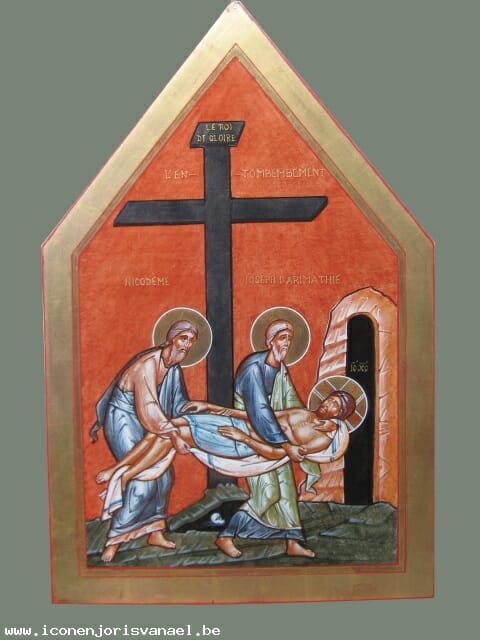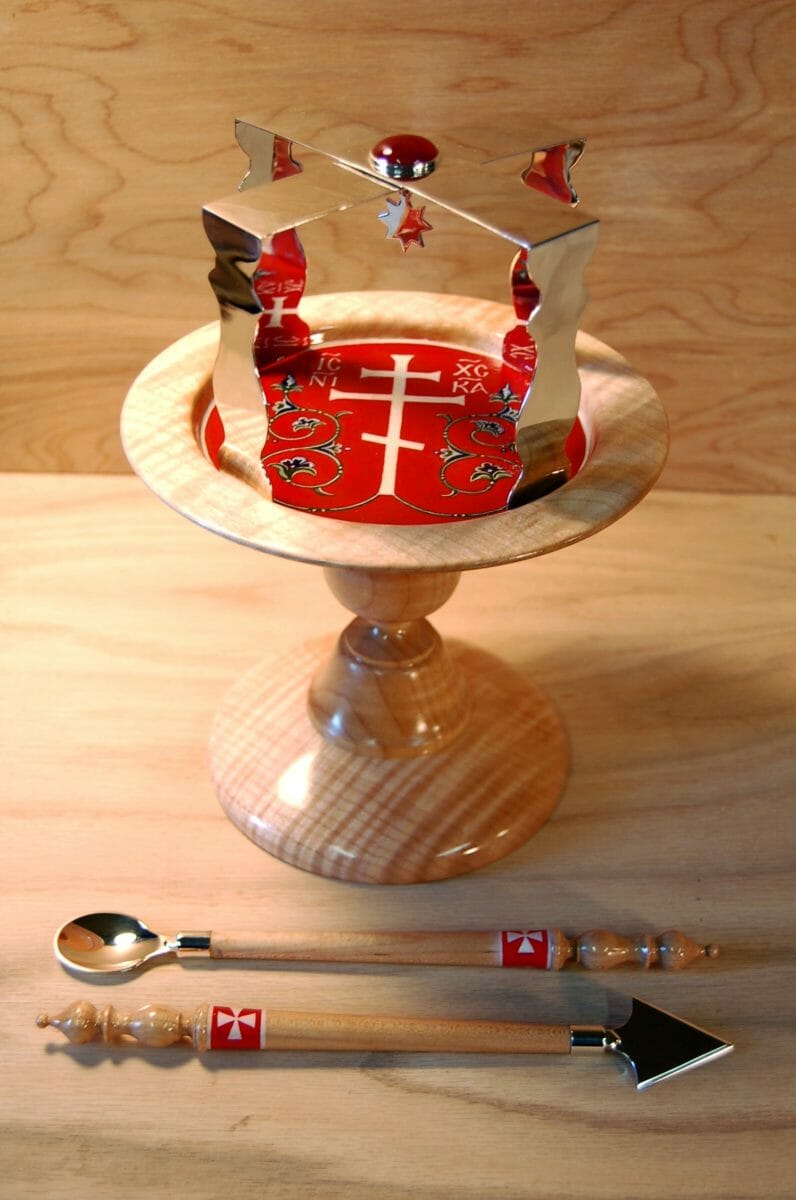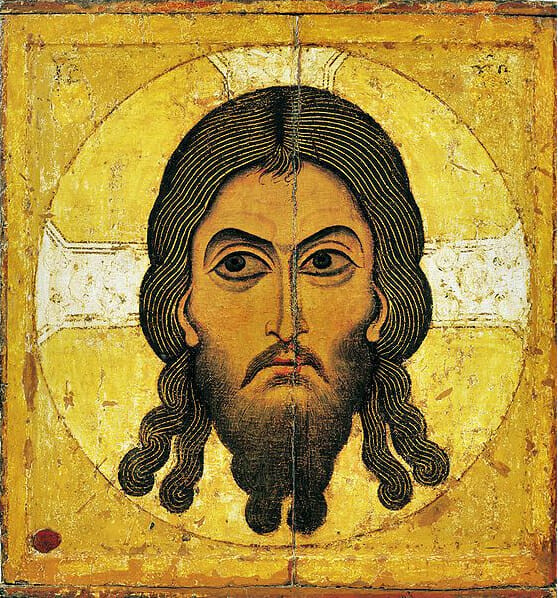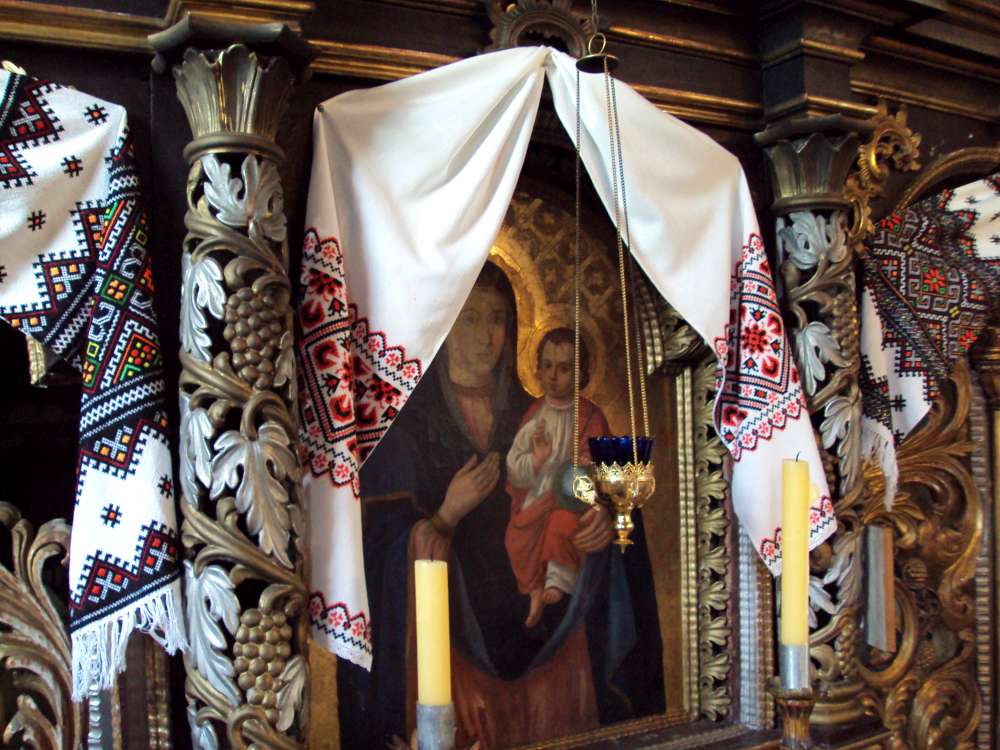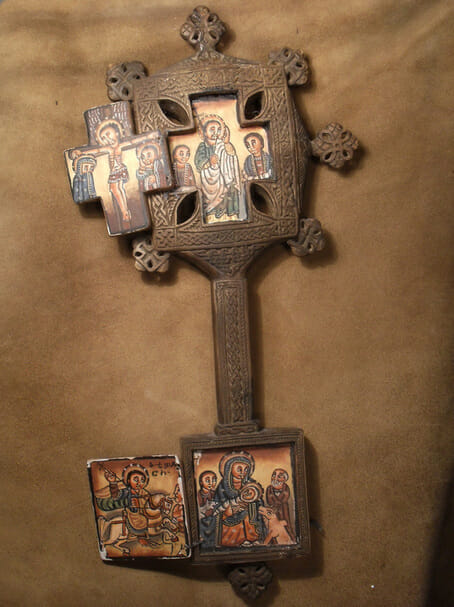Liturgical Objects
Wedding with Carved Crowns
Several months ago I posted an article on wooden crowns I had carved for a young couple. Well, I was overjoyed when this newly married couple, Peter & Chelsea Simko sent me pictures of the ceremony using the crowns. I thought I would share them with all of you. May Christ crown them with glory!…
Continue reading »Technical Hierarchy
This is post 3 of 3 in the series “Hand and Machine” Jonathan Pageau and Andrew Gould exchange ideas in an attempt to understand the difficulties and opportunities of new technologies in the making of liturgical art. The discussion is also in reaction to fr. Silouan’s article on Degraded Iconicity. The Robot and The Master…
Continue reading »Further Thoughts on Machine-Manufacture of Liturgical Art
This is post 2 of 3 in the series “Hand and Machine” Jonathan Pageau and Andrew Gould exchange ideas in an attempt to understand the difficulties and opportunities of new technologies in the making of liturgical art. The discussion is also in reaction to fr. Silouan’s article on Degraded Iconicity. The Robot and The Master…
Continue reading »Bell Ringing in Scripture and Liturgy, from BLAGOVEST BELLS
Dear Readers, We have had a request for articles on liturgical bell ringing, so I am pleased to offer this excellent piece prepared by Mark Galperin and John Burnett of BLAGOVEST BELLS: Dear Brothers and Sisters: Church bell ringing is an intrinsic and permanent part of the Orthodox liturgical and musical tradition. It is deeply rooted…
Continue reading »Catholic Liturgical Furnishings From Ouspensky Disciple
Leonid Ouspensky, from his apartment/studio in Paris taught many young artists and created some of the finest iconography and iconographers of the 20th century. Recently, one of his pupils, Joris (George) Van Ael, came to my attention. Van Ael’s style is strongly reminiscent of others of the Ouspensky school like Fr. Patrick Doolan and Matushka…
Continue reading »Carved Wedding Crowns
I recently had the chance to make some wooden crowns for a seminarian planning his wedding. I had occasionally seen wooden crowns in recent Orthodox weddings and so I knew it was not completely an innovation. In discussion with the patron we decided on a tiara form, which would include a miniature stone icon and…
Continue reading »A Painted Wooden Chalice Set
Historically in the Orthodox world, it must have been very common for chalice sets to be made of wood. Particularly in Russia, village churches would not have been able to afford vessels of fine metal, and essentially everything in an Old Russian village was made of wood. Little survives of the simple ecclesiastical furnishings and…
Continue reading »Degraded Iconicity VI: Towards Fullness of Iconicity
This is post 6 of 6 in the series “Degraded Iconicity” Fr. Silouan Justiniano thinks through the effect of contemporary image culture and mechanical reproduction on iconography and our sense of the sacred. The Degraded Iconicity of the Icon: The Icon’s Materiality and Mechanical Reproduction Degraded Iconicity II: Uplifting Materiality and Symbol. Degraded Iconicity III:…
Continue reading »An Icon of the Kingdom of God: The Integrated Expression of all the Liturgical Arts – Part 9: Linens
This is post 9 of 12 in the series “An Icon of the Kingdom of God” Andrew Gould gives a unifying vision of how all the liturgical arts complement each other to create a living icon of the Kingdom of God. An Icon of the Kingdom of God: The Integrated Expression of all the Liturgical…
Continue reading »Ethiopian Carving
Since the post I wrote on Ethiopian art has attracted many comments, I thought I would share a few thoughts on Ethiopian carving. I had seen images of Ethiopian carving before my trip there and was looking forward to finding where they came from. It is in the city of Axum, where the fabled Ark of…
Continue reading »


